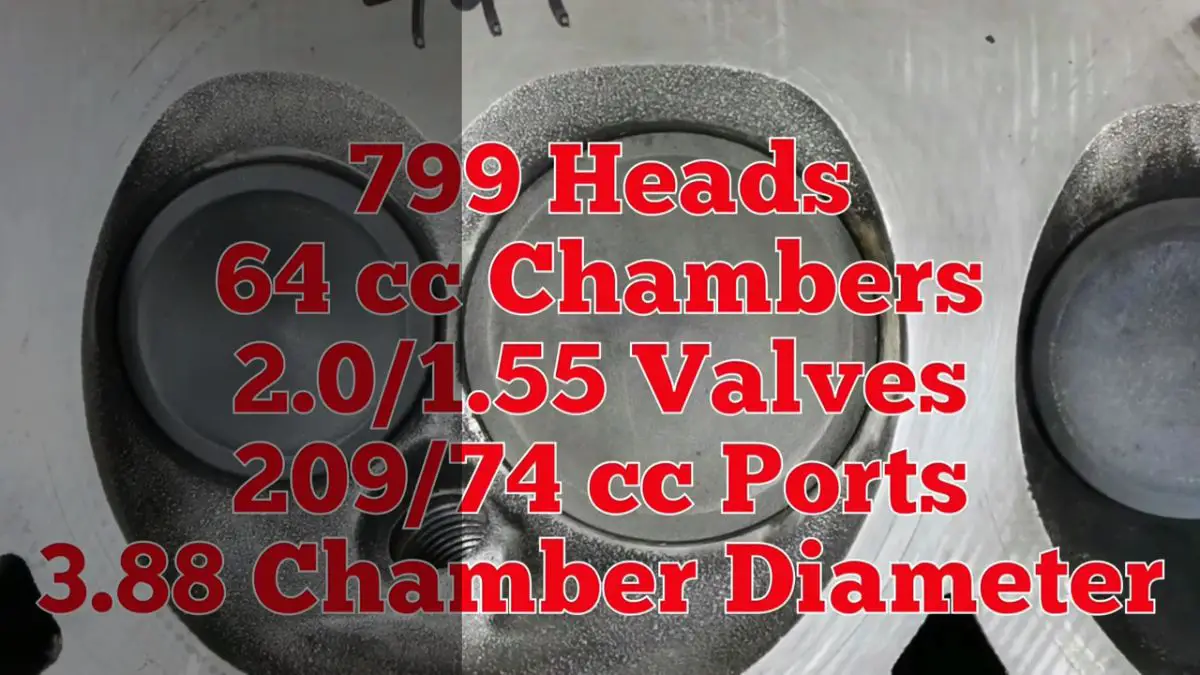Two popular options on the market are the 243 and 799 heads, but what sets them apart? In this article, we’ll dive into the key differences between these two cylinder heads and help you determine which one might be the better fit for your engine.
What are Cylinder Heads?
Cylinder heads sit on top of the engine block and are responsible for sealing the combustion chamber and managing the flow of air and fuel into the cylinders. They also house the valves, springs, and other components necessary for engine operation.
Cylinder heads play a crucial role in determining the performance of an engine, so choosing the right one is important.
Understanding 243 Heads
The 243 heads are factory cylinder heads that were used on the LS6 engine found in the 2001-2004 Chevrolet Corvette Z06. They are made of aluminum and have a small combustion chamber, which can result in high compression ratios.
The intake and exhaust ports are also designed for high flow, making them popular among car enthusiasts looking to boost horsepower and torque.
Understanding 799 Heads
The 799 heads, also known as the “LS6 truck heads,” were factory cylinder heads used on the 2001-2007 Chevrolet Silverado and GMC Sierra trucks with the 6.0L engine.
Like the 243 heads, they are made of aluminum and have a small combustion chamber. However, the intake and exhaust ports are slightly smaller than those of the 243 heads, and the valves are also smaller.
Key Differences Between 243 and 799 Heads
Material
Both the 243 and 799 heads are made of aluminum, which makes them lightweight and durable. However, the 243 heads are made of a higher-quality aluminum alloy, which makes them stronger and more resistant to heat. This can be beneficial for high-performance applications that generate a lot of heat.
Intake and Exhaust Ports
The intake and exhaust ports on the 243 heads are larger than those on the 799 heads, which allows for more air and fuel to enter the engine. This can result in higher horsepower and torque output. However, the smaller ports on the 799 heads can provide better velocity and airflow at lower RPMs, which can be beneficial for street-driven vehicles.
Valves
The valves on the 243 heads are larger than those on the 799 heads, which can improve flow and increase power output. However, the smaller valves on the 799 heads can be easier to control and less prone to valve float at high RPMs.
Chamber Size
Both the 243 and 799 heads have small combustion chambers, which can result in higher compression ratios and better performance.
However, the combustion chamber on the 799 heads is slightly larger than that of the 243 heads, which can provide better combustion efficiency and fuel economy.
Combustion Efficiency
Due to the differences in port size and valve size, the 243 and 799 heads offer different combustion efficiencies. The 243 heads are designed for high-flow, high-RPM applications, while the 799 heads are optimized for low-end torque and better fuel economy.
Pros and Cons of 243 Heads
Pros
- Large intake and exhaust ports for increased airflow.
- Larger valves for improved flow and power output.
- Lightweight and durable aluminum construction.
- Small combustion chamber for higher compression ratios.
Cons
- Can be more expensive than 799 heads.
- Designed for high-performance applications, may not be suitable for street-driven vehicles.
- Can be more prone to overheating and detonation in high-heat situations.
Pros and Cons of 799 Heads
Pros
- Smaller, more efficient intake and exhaust ports for better low-end torque and fuel economy.
- Smaller valves for better control and less valve float at high RPMs.
- Lightweight and durable aluminum construction.
- Small combustion chamber for higher compression ratios.
Cons
- May not provide as much power output as 243 heads in high-performance applications.
- Designed for truck engines, may not be suitable for other types of vehicles.
- Not optimized for high-RPM applications.
Which One is Better for Your Engine?
Choosing between the 243 and 799 heads depends on your specific engine and performance goals. If you’re looking for maximum horsepower and torque output for a high-performance application, the 243 heads may be the better choice.
However, if you’re looking for better low-end torque and fuel economy, the 799 heads may be a better fit. It’s important to consider factors such as your engine size, intended use, and budget when making this decision.
FAQs about 243 and 799 Heads:
Q: Can the 243 and 799 heads be used interchangeably?
A: While they share many similarities, the 243 and 799 heads have different port sizes and valve sizes, which can affect their performance on different engines. It’s best to choose the cylinder heads that are specifically designed for your engine.
Q: Can the 799 heads be used on high-performance engines?
A: While the 799 heads are optimized for low-end torque and fuel economy, they can still be used on high-performance engines with some modifications. However, for maximum power output, the 243 heads may be a better choice.
Q: Are there any aftermarket cylinder heads that are better than the 243 and 799 heads?
A: Yes, there are many aftermarket cylinder heads available on the market that offer even better performance than the 243 and 799 heads. However, they can be significantly more expensive and may require additional modifications to your engine.
Conclusion
The difference between 243 and 799 heads lies primarily in their port sizes, valve sizes, and combustion efficiencies. Choosing between these two options depends on your specific engine and performance goals.
Consider factors such as your engine size, intended use, and budget when making this decision. Regardless of which option you choose, upgrading your cylinder heads can be a great way to boost the performance of your engine and take your driving experience to the next level.


